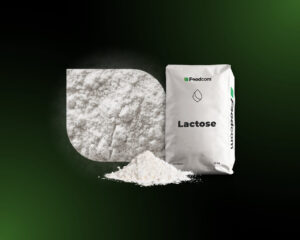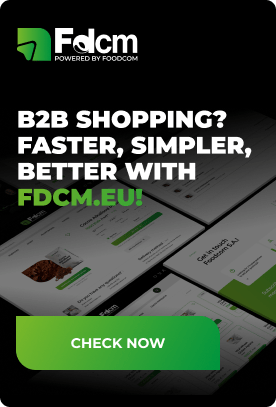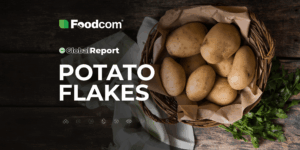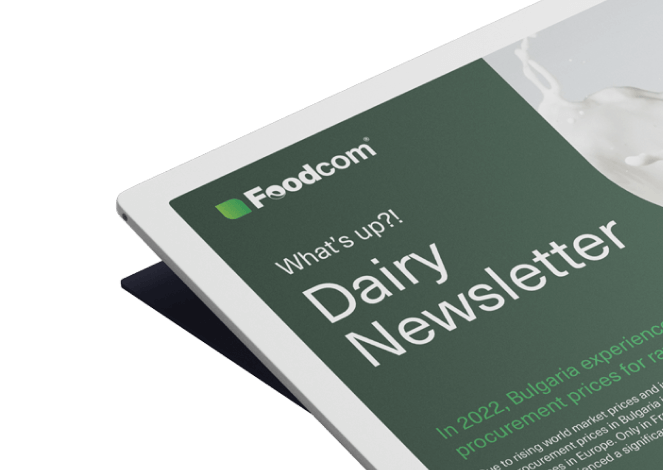- The lactose-free market is no longer a niche market, but has become a strategic pillar of the global dairy industry.
- Growing health awareness, technological developments, and a focus on clean ingredients are driving the dynamic expansion of this category across all continents.
- The mere declaration of “lactose-free” is not enough – added value is key: functionality, transparency, organic, and innovation.
- Europe and North America are currently market leaders, but Asia-Pacific has the greatest growth potential in the coming years.
Growing consumer expectations have meant that lactose-free products have ceased to be a niche and have become a permanent part of the market offering. Increased health awareness, demographic changes and an emphasis on ingredient purity are driving the growth of this category on all continents. While only a decade ago it was a specialised segment, today it is becoming one of the major transformations of the entire dairy industry.
Global analysis of the lactose-free dairy market
The market for lactose-free dairy products is no longer a novelty. It is a mature, steadily growing segment that has been at the centre of the transformation of the entire dairy sector for several years. The period from 2020 to 2023 saw a surge in its popularity, while the period from 2024 to 2025 saw a consolidation of market positioning, a broadening of the product range and an increasingly clear differentiation of the offer. The global market is estimated to be worth around $13.9 billion in 2025 – up from $12.8 billion the previous year, with an annual growth rate of 8-9%. Long-term forecasts remain optimistic, targeting $19-23 billion by the end of the decade.
The current growth is driven by several phenomena. First and foremost – continued high consumer awareness of lactose intolerance and general digestive problems associated with dairy. It is estimated that up to two-thirds of the world’s population is lactose-avoidant to some degree, which means that products free of this ingredient have a broad consumer base. A second key factor is the growing interest in ‘pure ingredient’ products – natural, easily digestible and free of artificial additives. Finally – developments in enzymatic technology and precision fermentation have made it possible to create lactose-free products that do not differ in taste, texture or quality from their classic counterparts.
In 2024 and 2025, the segment is clearly expanding: in addition to fluid milk, yoghurts, cheese, ice cream or even butter and cream are growing in importance. Consumers no longer regard lactose-free products as a dietary alternative – they expect a full range that meets their daily needs, including taste and cooking. At the same time, functional products – enriched with probiotics, protein or other health-supporting ingredients – are taking an increasing share of sales, which is part of a broader trend of category intermingling: between food, supplementation and lifestyle.
It is also worth noting that this segment is increasingly finding its way into the main distribution channels – both in large grocery chains and e-commerce. This is the result not only of increased availability, but also of growing consumer confidence in speciality brands and private labels of retail chains. Lactose-free products are no longer seen as a ‘medical product’ – they are simply becoming the new standard for an increasingly broader audience.
Regional analysis of the market for lactose-free dairy products
Europe
Europe is a colossus in the dairy segment, with the entire dairy market valued at approximately USD 192.7 billion in 2023, with a growth outlook of 4-5 % per year. Within this giant, the lactose-free market, although smaller, is growing faster – at the 2023 valuation it reached around USD 5.1 billion, with forecast double-digit growth to 2033, a CAGR of around 6.4 %. The entire lactose-free sector in Europe is estimated to be worth more than USD 900 million in 2025.
Lower lactose tolerance rates in northern and central European countries are accelerating the adoption of lactose-free products, but key here is the growing demand for clean labels and organic certification. Large retail chains are effectively integrating these options into their regular offerings – no longer just as a niche line, but a permanent item on the shelves.
North America
The US and Canada is the most advanced region in terms of availability: lactose-free products now represent a significant part of the dairy offering. In 2023, the US market for lactose-free beverages alone was worth approximately USD 1.23 billion, growing at a ~8.6 % CAGR until 2032. Additionally, the lactose-free segment is estimated to be worth approximately USD 15 billion in 2025 with an expected growth of 7 % per year until 2033.
According to Axios data, sales of lactose-free dairy beverages grew by around 14 % year-on-year, distancing plant-based substitutes – resulting in an increase in US dairy consumption of more than 15 % and rapid adoption among consumers previously coming off traditional ‘cow’s milk’. Given this scenario, it is clear to see how dynamically North America is approaching this category and not just as an alternative, but as the new standard.
Asia-Pacific and other regions
Although sources have less detailed regional data, forecasts indicate that Asia-Pacific will become the fastest-growing dairy market, including in the lactose-free category. The increasing number of people with intolerance (especially in China above 80 per cent) and informed consumer choices are creating a solid base for growth. This is a sign that, although the starting base is smaller, the growth energy, especially supported by e-commerce and investment, could equal the previous dominance of the West in the coming years.
In Latin America, the Middle East and Africa, the lactose-free market is entering an early growth phase – driven by increased health awareness and urbanisation. Investments in Poland or Chile are moving the category from the level of ‘health alternative’ towards a mainstream offering.
In summary, Europe and North America are already building strong foundations. Both regions are characterised by a large base, distribution growth and market consolidation. Asia-Pacific, on the other hand, although less advanced, has the greatest potential for rapid growth. The other regions are at the beginning of the journey, but growing awareness and product availability are leading the category towards global expansion.
2025 – trends and forecasts in the lactose-free market
The market for lactose-free dairy products no longer functions as an add-on but as a fully-fledged, rapidly growing category. Manufacturers who have so far treated it as a health segment or as a response to the needs of a niche customer are now facing much more complex operational and investment decisions.
The most important challenge now remains to build an advantage in a situation where the ‘lactose-free’ label alone is no longer a differentiator. The consumer has become accustomed to the presence of these products on the market and expects more than just a functional alternative. For companies, this means the need for precise positioning. Should the product be organic, high-protein, local or maybe just affordable? Combinations of values are gaining strategic importance – a product that is lactose-free but also organic, protein, vegetarian or specialised.
A parallel tension is emerging between lactose-free products and plant-based drinks. Although sales growth of the latter has slowed down, consumers have not abandoned them completely. In many cases, they use both categories interchangeably, adapting the choice to the context – another for breakfast, another for a sports diet, another for a coffee shop. This makes it necessary for brands to look more broadly at the portfolio, rather than building a single product message.
Technological innovation is also becoming increasingly important. Precision fermentation, new enzymes, and the development of biotech dairy protein alternatives are already appearing not only in start-ups, but also in the investment plans of the big players. In a few years’ time, these could change the way we understand dairy – not only in terms of composition, but also in terms of cost, environmental footprint and supply chain control.
The question of the cannibalisation of the classic range is also not insignificant. For some producers, the growth of the lactose-free segment means a natural shift of consumers towards higher-margin products. For others, it involves the risk of a decline in sales of the core range. This calls for a new approach to category management and precise monitoring of the revenue structure.
Finally, regulations on labelling, ingredient declaration and transparency of origin could shape the market in a whole new way in the coming years. The European Union is already tightening information requirements, which is forcing changes not only in marketing, but also in production and logistics.


“The segment of lactose-free products has undergone a fundamental transformation in recent years. It has gone from being a response to a specific health need to a fully-fledged category that shapes the strategies of entire companies. It is no longer a choice for a consumer with a dietary restriction, but an everyday alternative that is expected by an increasingly wide audience. In practice, this means that simply being present in this category is not enough. Manufacturers today have to compete not only on price or quality, but also on ingredient transparency, innovation and brand credibility. In addition, tightening regulations and increasing retailer demands mean that the entire value chain, from raw material to logistics, has to be rethought. In my opinion, we are at a stage where success will no longer be determined by ‘lactose-free’ alone, but by what the product offers beyond this declaration.”
Global Foodcom S.A. reports.
Curious about what’s next for the lactose-free market? Discover the latest trends and insights that will shape the final months of 2025. Visit our blog as we regularly update our global reports. Stay up to date with Foodcom S.A.
![Lactose-free products market analysis in 2025 [Global Report] Lactose-free products market analysis in 2025 [Global Report]](https://foodcom.pl/wp-content/uploads/2025/07/Global-Report-szablon-pod-bloga-Lactose-Free-Dairy-1520x760.png)



![Przegląd rynku laktozy w 2024 [Global Report] Przegląd rynku laktozy w 2024 [Global Report]](https://foodcom.pl/wp-content/uploads/2024/12/creatine-na-bloga-300x150.png)
![Przegląd i analiza rynku czekolady w 2025 [Global Report] Przegląd i analiza rynku czekolady w 2025 [Global Report]](https://foodcom.pl/wp-content/uploads/2025/06/gr-czekolada-300x150.png)


